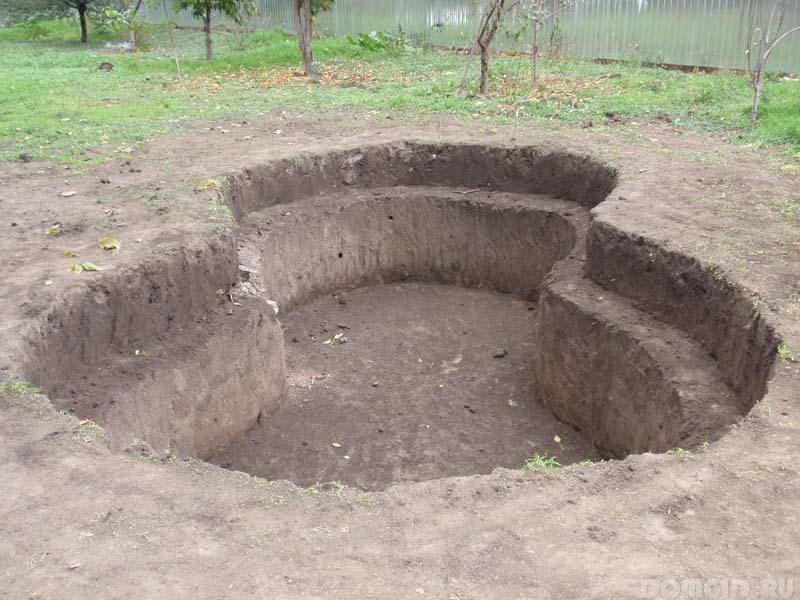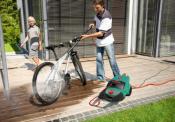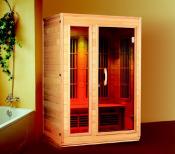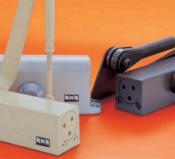Search
Login
How to waterproof a pond
Very much the design of a suburban area without a pond seems incomplete. Therefore, many owners of private houses and cottages are trying to equip at least a small picturesque pond.
At the planning and selection stage, special attention should be paid to the pond waterproofing, on which the functionality, presentability and durability of the entire structure will depend.
Content
- Waterproofing an artificial pond is an important aspect of maintaining the attractiveness of a reservoir
- Waterproofing a pond with a film
- Using ready-made hard molds for the pond
- The use of liquid rubber is a universal method of waterproofing video
- Clay pond waterproofing sequence
- Concrete pond waterproofing
- Alternative pond waterproofing methods
Waterproofing an artificial pond is an important aspect of maintaining the attractiveness of a reservoir
Creating an artificial reservoir is a simple process that requires compliance with certain rules, the main of which is the organization of adequate waterproofing of the pond.
The main objective of waterproofing is to retain water and protect the pond from the negative effects of environmental factors. This issue is especially relevant for areas with sandy soil with high water permeability or with a low location of groundwater.

The device of an artificial reservoir is possible using one of three waterproofing methods:
- the use of special materials as a separation layer between soil and water (films, clay, liquid rubber, concrete, etc.);
- reservoir close to the maximum natural conditions without waterproofing;
- creating a barrier mechanically (compaction of the bottom of the reservoir).
Properly organized pond waterproofing provides a number of significant advantages:
- the risk of flowering and rotting water is reduced;
- the pond remains attractive for a long time;

- care of the pond is simplified;

- waterproofing of a reservoir protects nearby buildings from flooding and destruction of the foundation;

- the shape of the pond retains the original sharpness of the line (the shore is not washed out);
- the waterproofing layer acts as a barrier to the penetration, reproduction of bacteria and insects in the water.
The choice of materials and technology for waterproofing an artificial reservoir should be carried out based on the following parameters:
- pond size;
- ornate form of the reservoir;
- when installing waterproofing yourself, it is important to take into account your own skills (some materials are easy to install, and for the quality installation of others (concrete) you need the help of specialists);
- functionality and operating conditions of the reservoir;
- cost of consumables.
Each of the waterproofing materials has its own advantages and disadvantages, and the effectiveness of a particular method depends on compliance with the technology. Therefore, before starting work, you should understand the characteristics of the materials used and get acquainted with the basic rules of waterproofing ponds.
Waterproofing a pond with a film
types of waterproofing film
Film waterproofing of the pond does not require large financial investments, and the laying of the film can be done independently, without the involvement of specialists.

For waterproofing a reservoir, you can use the following types of film material:
- Polyethylene. For laying, polyethylene with a thickness of 500 μr is suitable, while it must be folded in half. The material is characterized by the lowest price and low resistance to environmental factors. The service life of waterproofing from polyethylene is 3-5 years.
- PVC coating more stable, its service life is 8-10 years. The coating is of two types: reinforced and two-layer. In the reinforced PVC coating, a woven mesh is laid between the two layers of material, which adds strength. The weak point of the PVC film is the gradual destruction by ultraviolet radiation. It should be noted that damaged sections of the film are easily repairable, which cannot be said about polyethylene. PVC coating has good elasticity and is easy to straighten on the surface of the pit.

- Butyl rubber web considered a great option for a pond of any size. Due to the strength of the material and resistance to ultraviolet, a waterproofing coating made of butyl rubber film will last about 50 years. The canvas has good ductility and can be laid at any time of the year. Frost resistance of the material allows not to drain the water from the pond for the winter. Butyl rubber films in different colors are available. The choice of shade will depend on the functional purpose of the reservoir (dark colors will give the pond a natural look, and the inhabitants of the reservoir will look more beautiful and brighter against a light background of the bottom).

film-laying technology
The technology of laying the film for pond waterproofing does not cause any difficulties, the main thing is to adhere to a certain algorithm.
- On the site, you need to draw the contours of the proposed pit and calculate the film sizes:
- Film length \u003d pond length + double pond depth + 1 meter;
- Film width \u003d pond width + double pond depth + 1 meter.
- Dig a pit in accordance with the outline and design of the project.

- Along the perimeter of the reservoir (along the coastline), you need to dig a trench for subsequent fixing of the film.
- Cover the surface of the pit with sand (a layer of about 50 mm) and tamp.
- Before laying the film, place the geotextile.
- The waterproofing film can be laid in two ways:
- spread the canvas on a flat area, mark the center point and fold it in an envelope; transfer to the pit and deploy in the direction from the middle to the edges of the reservoir;
- transfer the spread sheet to the pit, while comparing the center of the film and the bottom of the pit; this option is suitable for a small pond.
- Fasten the film with stones along the coast.
- It must be controlled so that there is no tension on the canvas, it is better to leave a slight sag.
- The foundation pit should be filled with water and let the film settle (1-2 days).

- Excess web at the edges can be trimmed, leaving 50 cm for fixing.
- The edges of the film can be tucked under the bars or plastic pipes, and then bury in a trench dug along the pond.
- Decorate the pond with decorative stones and plants.
The waterproofing film can be hidden. To do this, release water, fill the bottom of the pit with sand and refill the pond with water
Using ready-made hard molds for the pond
the advantages and disadvantages of the method
Rigid pond molds on the market are represented by a wide range. They are made of plastic (regular or reinforced) or fiberglass.

The use of a rigid form is perhaps the easiest and fastest way to equip a reservoir and solve the issue of waterproofing for a pond. You can buy a form at any major hardware store or order delivery via the Internet.

Advantages of using a rigid form:
- simplicity and speed of installation;
- can be used to create ponds, pools and drinking springs;
- varied and interesting design of forms.
The disadvantages of a rigid form, as a waterproofing material, include:
- probability of deformation after severe frosts;
- possible cracking of the material during prolonged use;
- change the size and shape of the pond does not work.
do-it-yourself installation
Consider the phased installation of a rigid form:
- At the installation site, draw a pit contour: lay the mold on the ground and draw a round shovel around the edges (it is advisable to add 20 cm so it will be more convenient to place the pallet).
- Dig a bed for the reservoir (the depth of the pit should be 5 cm more than the depth of the form itself).

- Tamp the soil and fill it with a layer of sand (layer thickness 5 cm). Geotextiles can be laid on top of the ground (in front of the sand layer), this will improve the waterproofing of the pond.

- For better compaction of sand, it can be wetted.
- Using the building level, you need to check the horizontal terraces and the bottom of the pit.
- The finished form must be placed in the pit and filled with water (the pressure of the water should be weak so that the position of the bath does not shift).
- The gaps between the walls of the mold and the pit should be covered with wet sand.
- The area around the reservoir is decorated with stones, plants. At the bottom of the pond, you can put special baskets with aquatic plants.
The use of liquid rubber is a universal method of waterproofing
Pond waterproofing with liquid rubber is a relatively new and fairly effective method. The material is made on the basis of bitumen, with the addition of stabilizers and polymers. The appearance of the finished (frozen) insulation layer is a monolithic seamless carpet resembling a rubber product.

This method of waterproofing is used in many industrial and domestic fields of activity. Liquid rubber can be used to treat ponds of any size and any design complexity.

The advantages of using liquid rubber:
- the strength of the material allows you to create a wear-resistant waterproofing, whose service life is 20-50 years (depends on the composition of the mastic and the number of layers applied);
- high elasticity;
- the availability of liquid waterproofing for the pond (the price of mastic is not large, it will cost much more to buy equipment for spraying);
- can be used in places with harsh climates, as the material is frost-resistant and does not crack after winter.
The sequence of waterproofing with liquid rubber is as follows:
- Dig a foundation pit of the desired shape and size.

- Lay geotextiles and fix it along the coastal line with special brackets.
- Prepare containers with mastic, hardener and spray equipment.
- Evenly apply a layer of mastic (4 mm) on the surface of the pit.
- Leave the first layer to harden (depending on the type of hardener and air temperature, the solidification period can be 15 minutes 2 hours).
- After each subsequent layer, a break must be maintained (the number of layers is determined by the type of mastic).
Clay pond waterproofing sequence
Pond waterproofing with clay is a painstaking process, but the time spent is offset by the strength and reliability of the treated structures.

To perform the work, coastal or underground clay is used, and its quality can be checked in this way: add a little water to the material, mix and twist with a tube. The clay tube must be wound on a narrow object, such as a pen, and see if cracks have appeared. If there are no cracks, then the clay is of high quality and can be used as a waterproofing material.

To prepare the waterproofing mixture, clay must be used that is extracted from the lower layers without admixture of sand, stones and organic residues.
Do-it-yourself waterproofing the pond using clay can be divided into the following steps:
- According to the project, draw pits for the arrangement of the pond. The total layer of the finished clay frame will have a thickness of about 40 cm, this must be taken into account and dig a slightly larger pit. It is better to make the walls of the pit inclined, which will facilitate the further process of applying clay.
- Clay should be mixed with water. The mixture should be pasty in composition.
- The surface of the pit must be covered with wood ash or soot.
- A clay layer is applied to the bottom of the reservoir (thickness about 15 cm). As it dries, the clay must be tamped (the clay must be tightly connected to the soil).
- The second layer of clay is applied when the first is a little hardened, but has not yet had time to harden. The thickness of the second layer is up to 30 cm.

- After the waterproofing layer has dried, fine crushed stone should be poured onto the bottom of the pit (the diameter of the stones should not be more than 4 cm).
- A layer of crushed stone is compacted, and a sand layer is created on top of it. Additional layers reduce the risk of leaching of clay, improve water quality and waterproofing performance of the reservoir.
- The pond is filled with water under low pressure.
Concrete pond waterproofing
Arrangement of a reservoir using concrete waterproofing is the longest, most laborious and expensive process. However, such waterproofing is considered the most durable and strong. The waterproofing of a concrete pond requires construction skills from the contractor, without which serious errors are likely to be made.

Concrete waterproofing has several advantages:
- design of structures of any complexity;
- it is used for reservoirs of any purpose;
- can be used to create a pond deepened in the ground, or a hinged bowl;
- durability.
The disadvantages of the waterproofing coating include:
- an additional layer of waterproofing material (liquid rubber) may be required, since concrete is destroyed by constant contact with moisture;
- significant financial investments;
- before frost, it is advisable to drain the water from the pond.
The complexity of waterproofing will directly depend on the size and configuration of the structure.
Work sequence:
- Definition and drawing on the site of the contours of the future pond.
- To create a bowl, it is necessary to make formwork, and to equip a conventional pond, dig a pit.

- Prepare a concrete solution and pour the mold.
- Freezing of the pit (about 28 days).

- Drawing an additional layer of a waterproofing.
Alternative pond waterproofing methods
Alternative methods of waterproofing ponds include the mechanical method (Sepp-Holzer technology) and the use of concrete mats.
Mechanical waterproofingit is carried out without involving any materials, but consists in tamping the moistened soil at the bottom of the pit with heavy equipment (excavator).

A pit of 30-40 cm is poured with water, and the excavator begins to compact the soil with a bucket until a dense upper layer is formed. After that, a layer of earth can be poured into the pond if it is planned to plant aquatic plants.
Bentonite Mats can be used as an independent waterproofing layer or as an addition to the main one, for example, with concrete. Their main advantage is the ability to expand and thereby eliminate problem areas (microcracks).

Cargo (stones, sand, gravel) must be laid on top of the mats, since when wet they can surface, disrupting the entire waterproofing of the reservoir.
The number of pond waterproofing options presented once again confirms the importance of this issue. Timely and competently carried out waterproofing will retain the attractiveness of the reservoir, as well as save their owners from possible problems.





